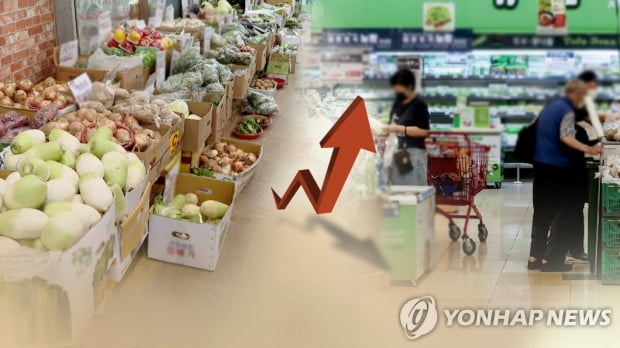Green onion 227.5%↑·Egg 41.7%↑… Rent 0.9%↑, the most increase in 3 years

Consumer prices rose 1.1% last month, the highest rate in one year.
The inflation rate of livestock and fisheries products was the highest in 10 years, as agricultural crops were sluggish, avian influenza (AI) damage and holiday demand increased.
◇ Consumer prices rose the highest in one year… Green onion 227.5%↑, egg 41.7%↑
According to the consumer price trend of the National Statistical Office on the 4th, the consumer price index for February was 107.00 (2015 = 100), up 1.1% from the same month last year.
It is the highest rate of increase since February last year (1.1%).
Consumer inflation rose 1.0% in September last year, then remained at the 0% level until October (0.1%), November (0.6%), December (0.5%), and January this year (0.6%), then again to 1%. Climbed up.

Inflation of livestock and aquatic products soared due to sluggish cropping and holiday demand, leading the overall rise in consumer prices.
Agricultural and marine products rose 16.2%, recording the highest growth rate in 10 years since February 2011 (17.1%).
Of these, agricultural products jumped 21.3% from a year ago.
This is the highest rate since January 2011 (24.0%).
In particular, inflation of green onions jumped 227.5% and apples rose 55.2% due to poor harvest due to worsening weather conditions.
Red pepper powder (35.0%) and rice (12.9%) also increased significantly.
Livestock products also rose 14.4%, showing the largest increase since June 2011 (16.1%).
In the case of eggs, supply declined due to AI damage, but as demand for holidays increased, it jumped 41.7%, and pork (18.0%) and domestic beef (11.2%) also increased a lot.
Aquatic products rose 1.9%.
Industrial products fell 0.7%.
Petroleum products fell 6.2%, but the decline slowed from the previous month (-8.6%) due to the recent rising international oil prices.
However, processed foods rose 1.2%.
Electricity, water and gas also fell 5.0%.
Prices of agricultural and marine products, industrial products, and commodities including electricity, water and gas rose 1.9%.
Service rose 0.5%.
Personal services accounted for 1.6%, of which, the price of dining out was 1.3%, and the price of personal services other than dining out was 1.7%.
Public services fell 2.1% due to the influence of policies such as free education.
The rent has risen 0.9% from a year ago, the highest increase since March 2018 (0.9%).
Jeonse and monthly rent increase rates were 1.2% and 0.5%, respectively.

◇ Core inflation rate of 0% increase for three consecutive months… “No inflation concerns”
By expenditure purpose, food and non-alcoholic beverages showed an increase of 9.7% due to the increase in domestic demand due to Corona 19.
On the other hand, entertainment and culture (-0.7%), communication (-1.2%), transportation (-2.0%), and education (-2.9%) fell.
The index (root price) excluding agricultural products and petroleum products, which shows the key trend of inflation, rose 0.8%, showing an increase of 0% for three consecutive months.
The fresh food index rose 18.9%, showing the highest increase in four months since last year’s October (19.9%).
The living price index, a perceived indicator, rose 1.2%, and the food and energy exclusion index rose 0.3%.
“As agricultural and livestock products and service prices have risen, the rise has increased,” said the Korea Statistical Office’s Economic Trend Statistical Officer. “It is possible to predict that the rise will continue due to inflation factors in terms of supply and demand. No,” he said.
Lee Jun-beom, head of the Ministry of Strategy and Finance, said, “Consumer prices in March will be affected by policy factors such as supply and demand conditions for agricultural and livestock products, flow of international oil prices, and expansion of free education.” We will actively respond for the sake of this,” he said.
Manager Lee explained, “We will focus on stabilization by inspecting the prices and supply conditions of major agricultural and livestock products such as eggs and vegetables on-site, and releasing government stockpiles or expanding imports, focusing on items that continue to be strong in prices.”
/yunhap news
